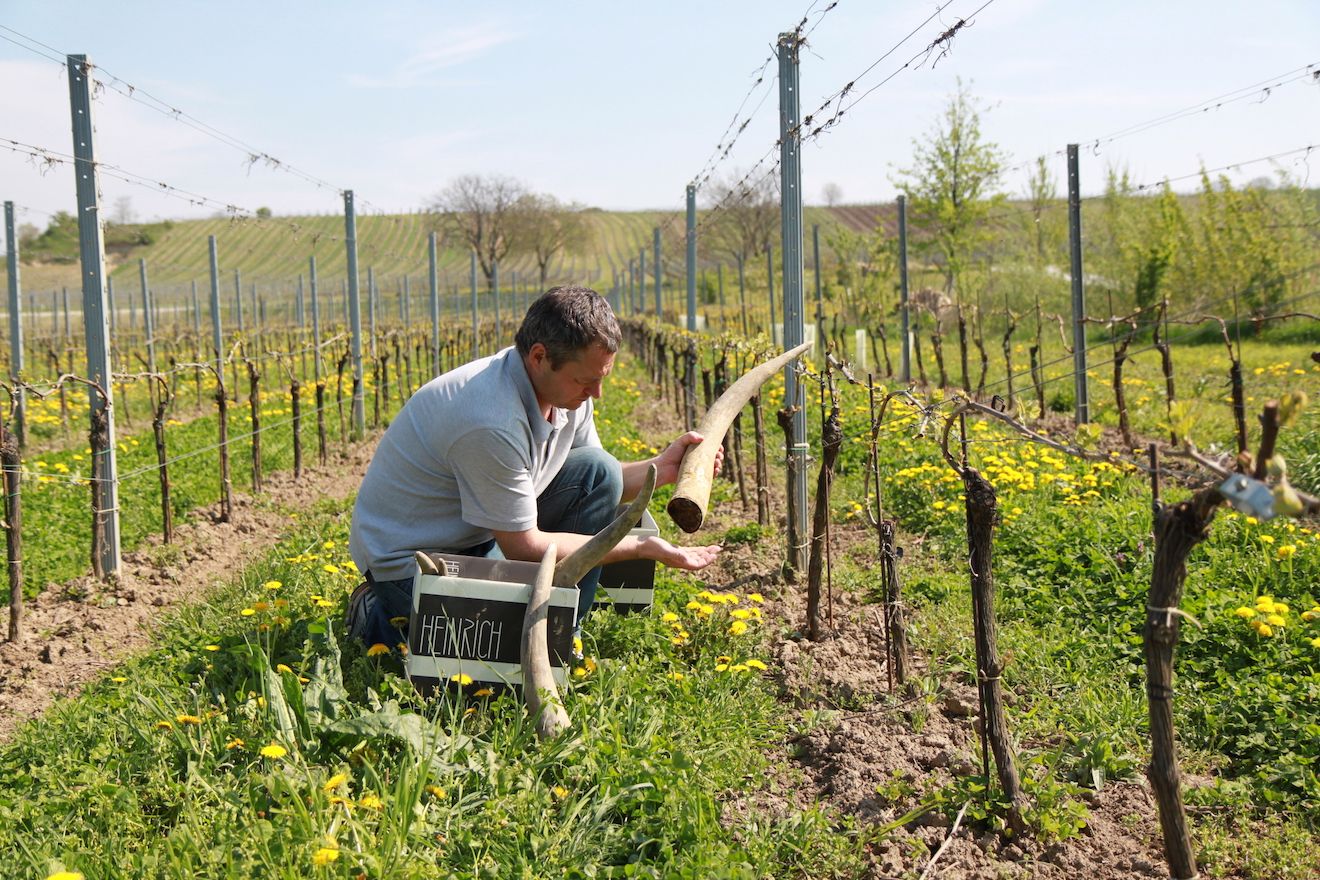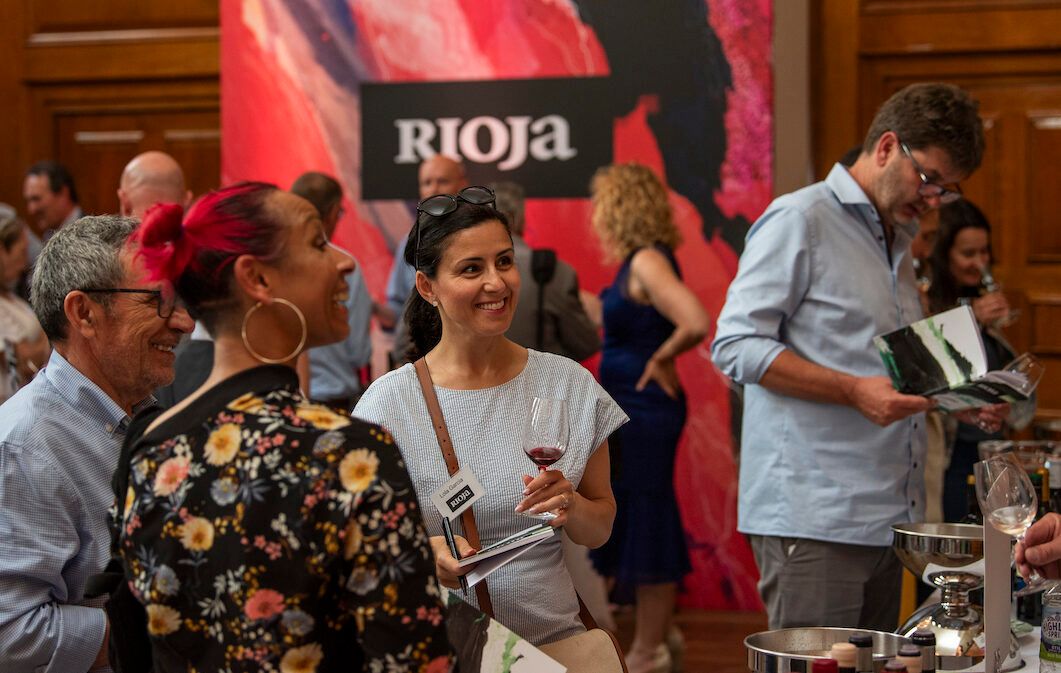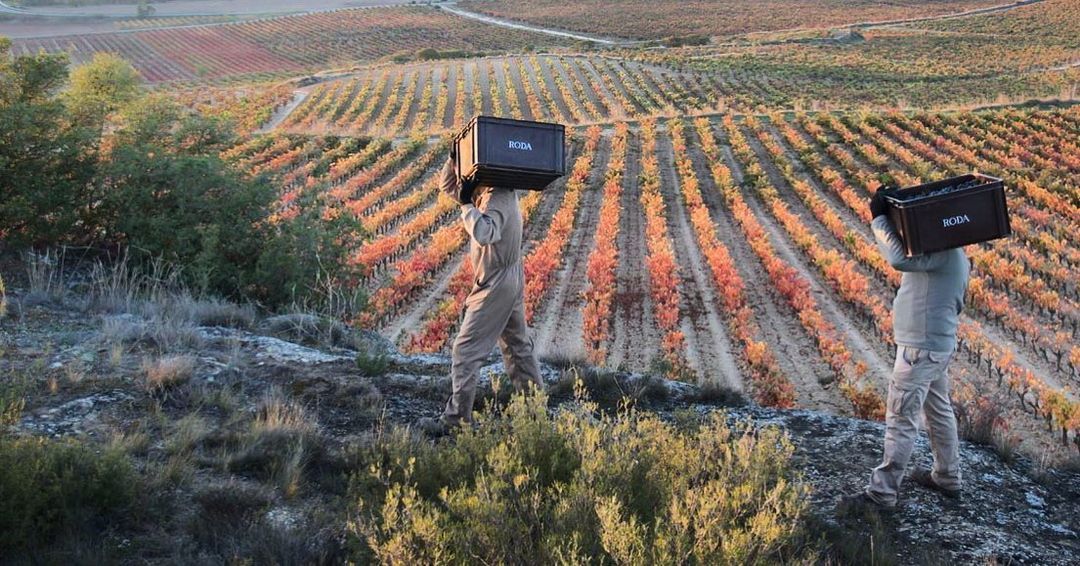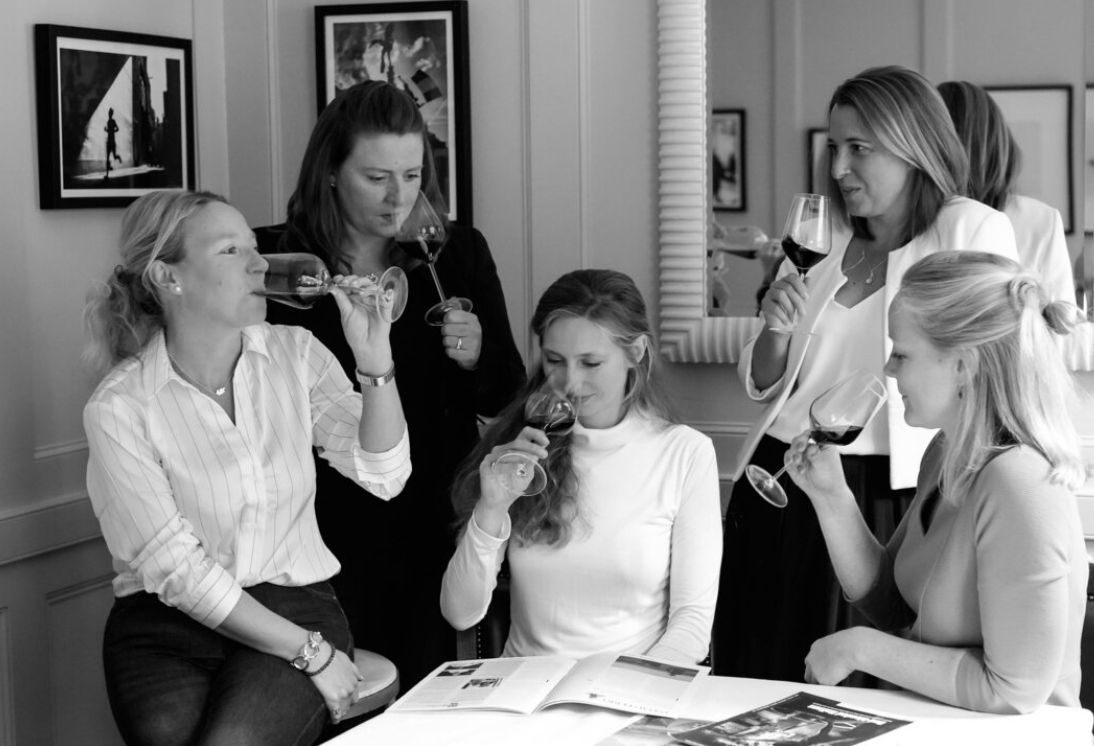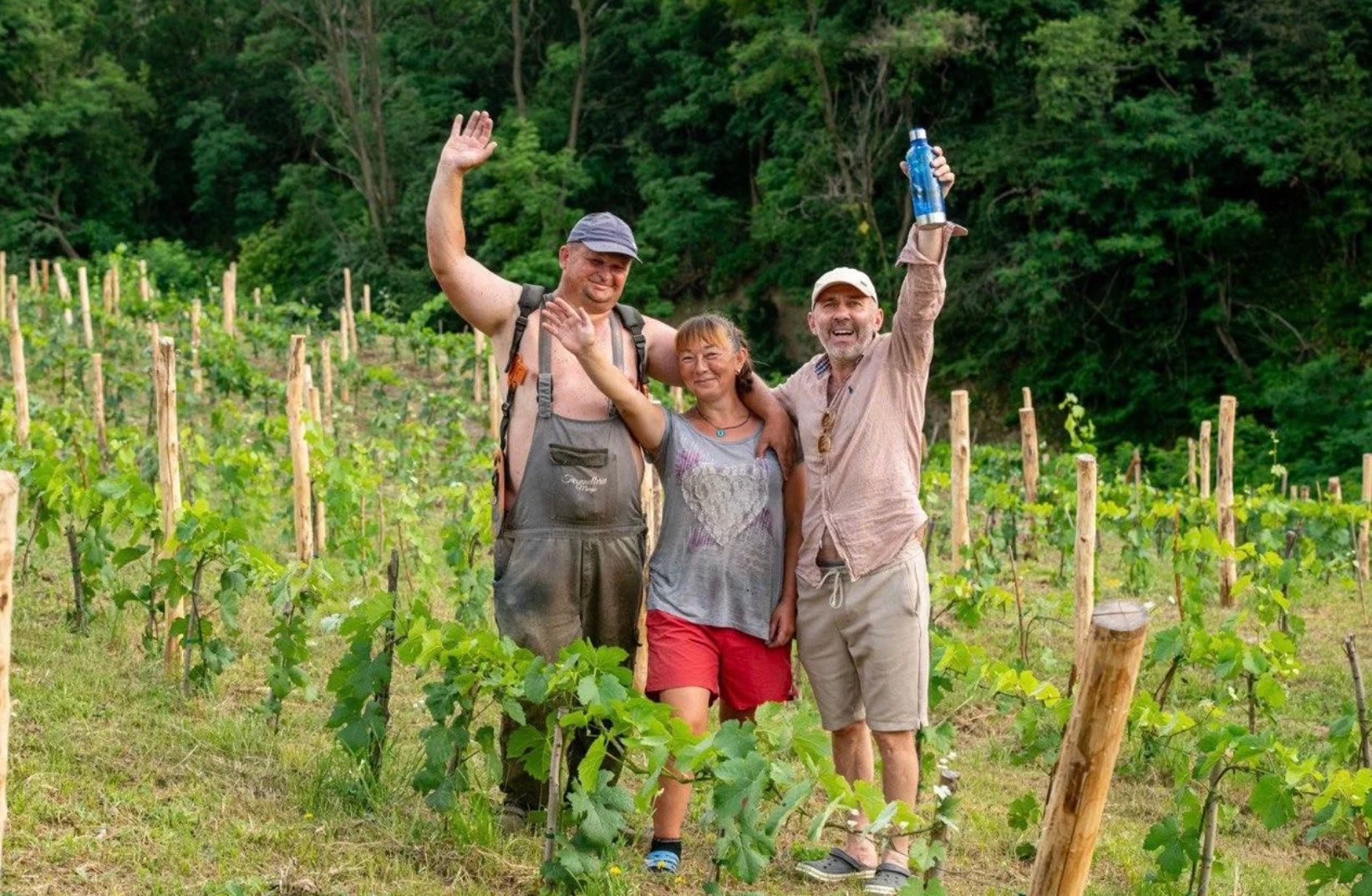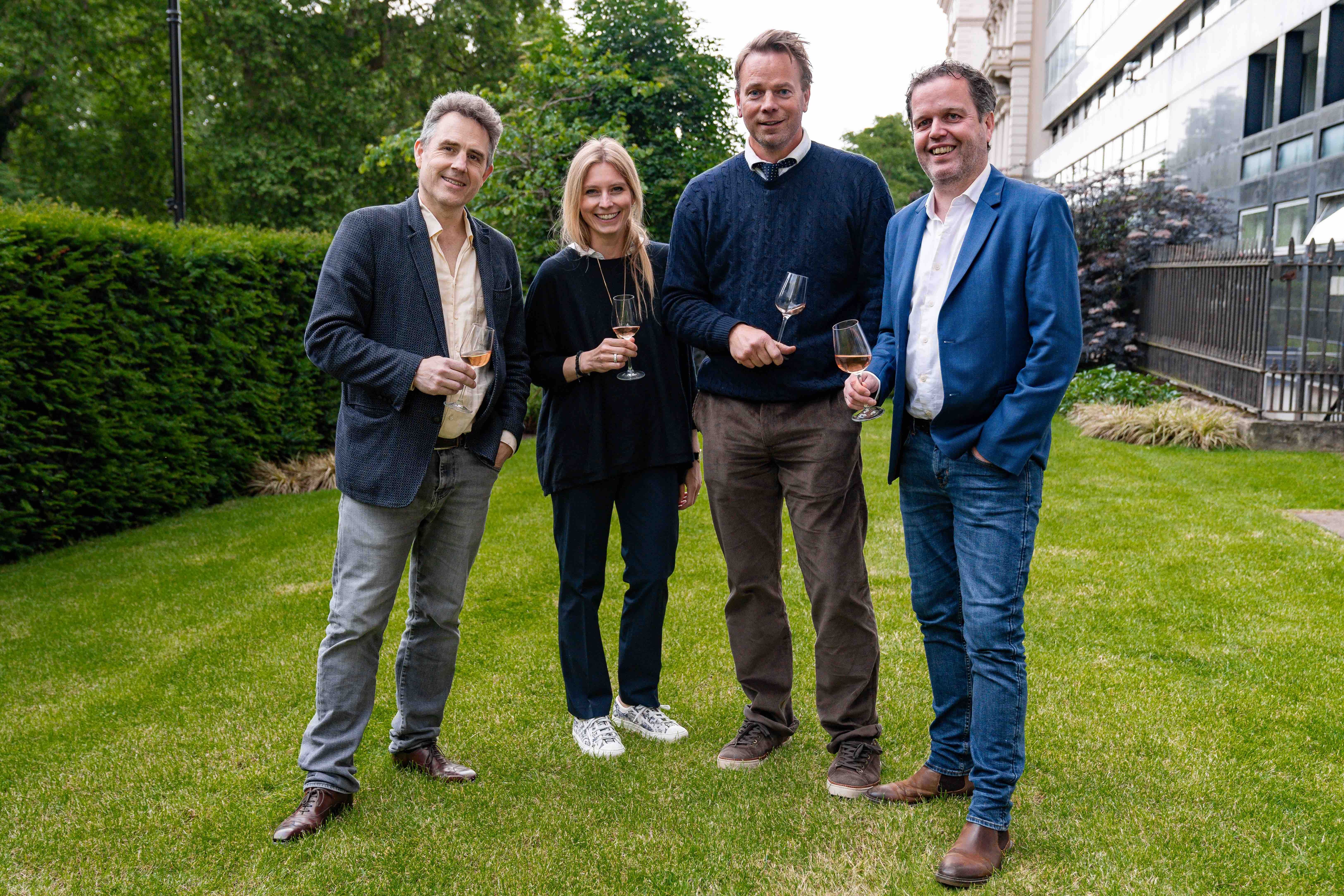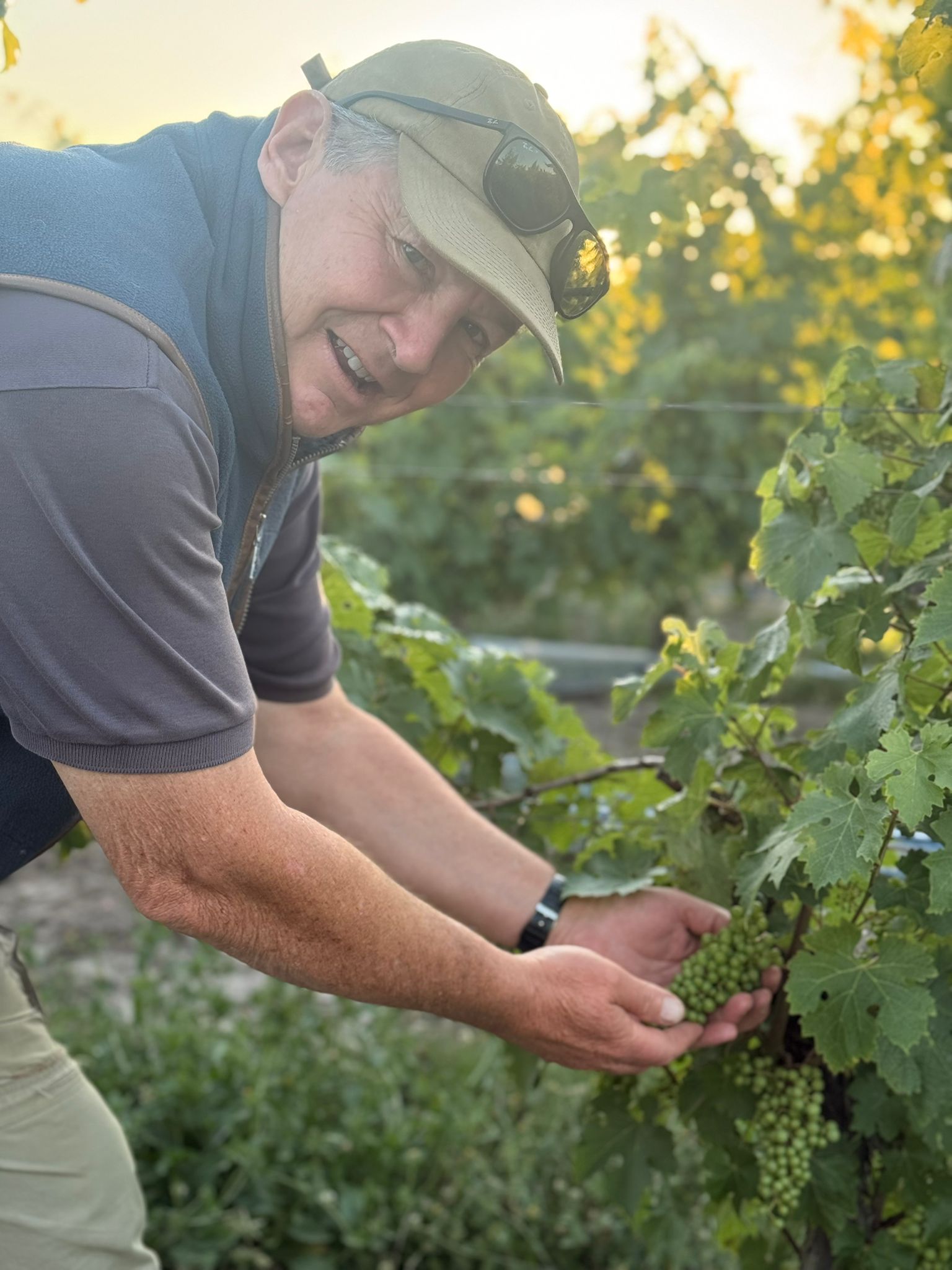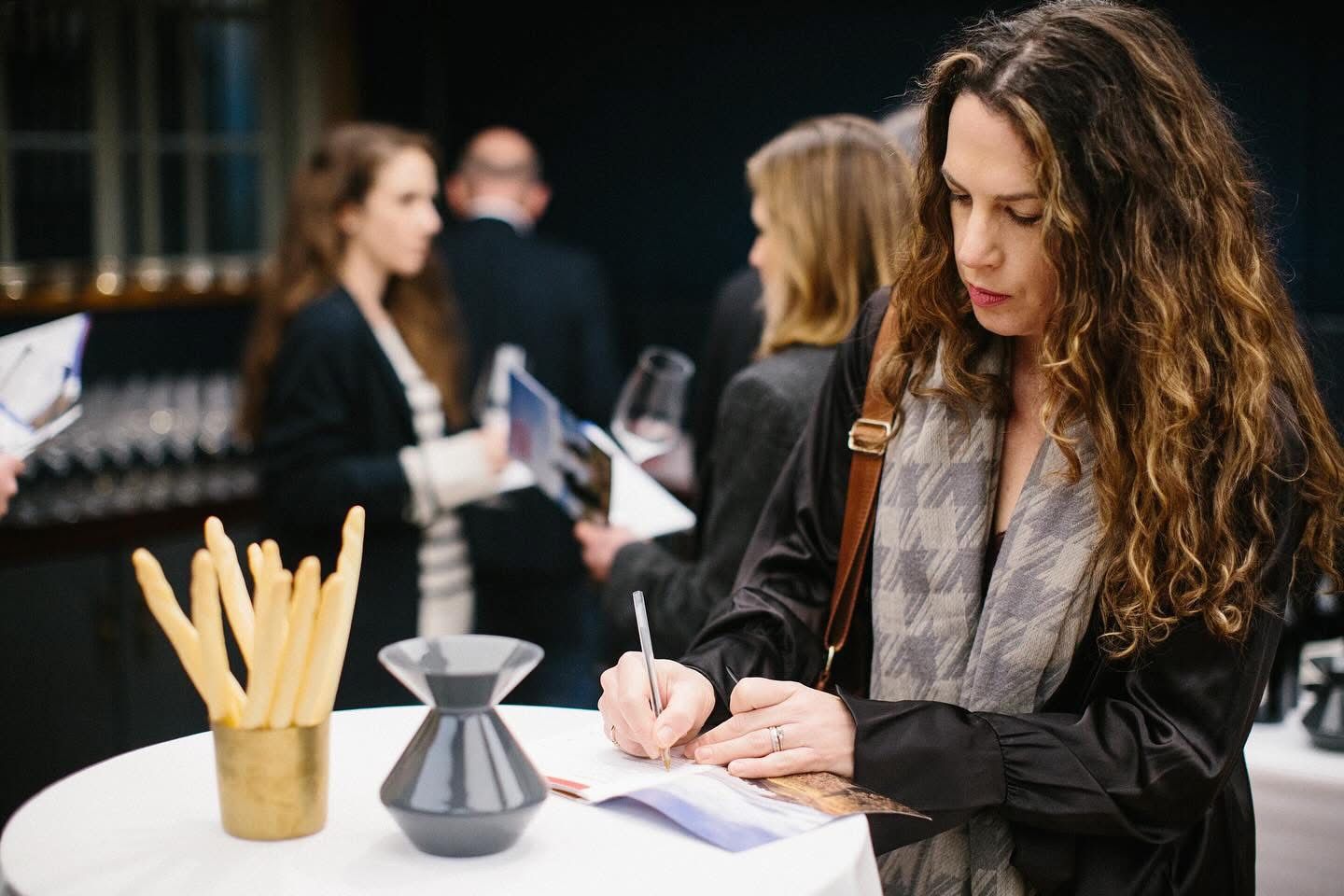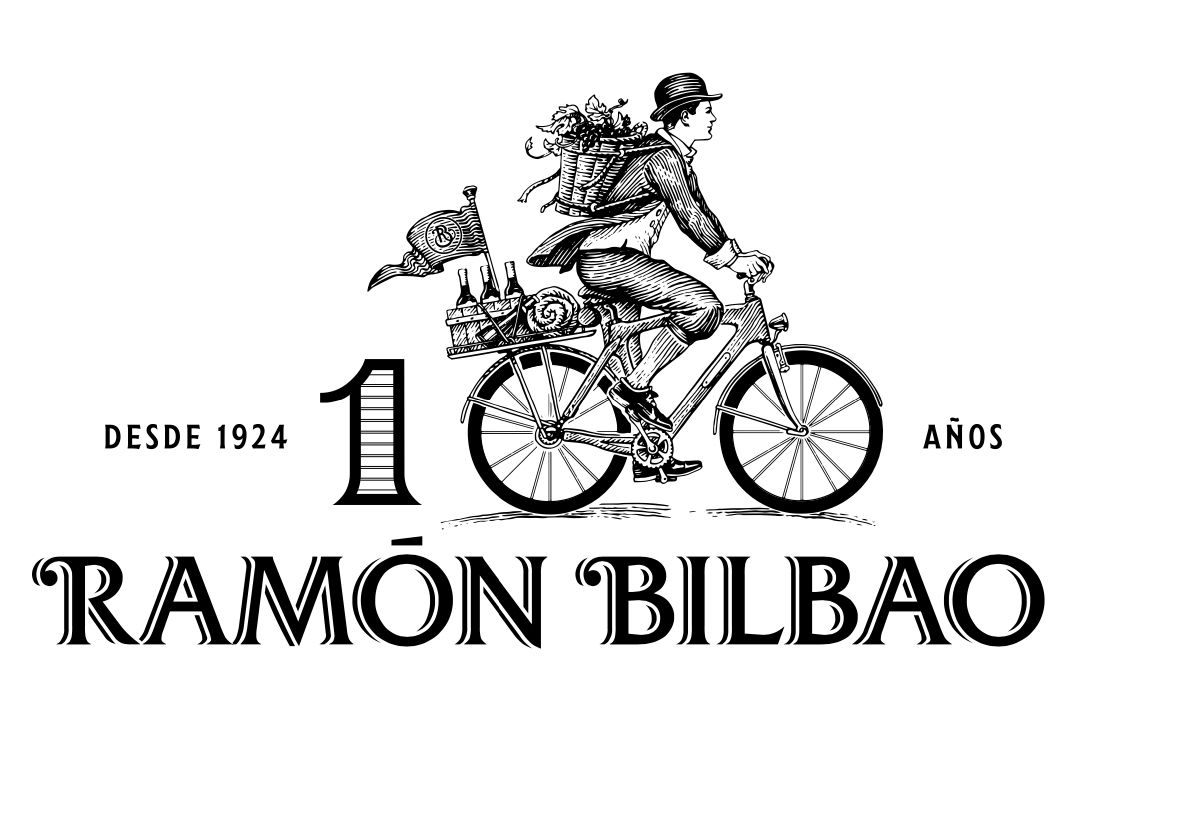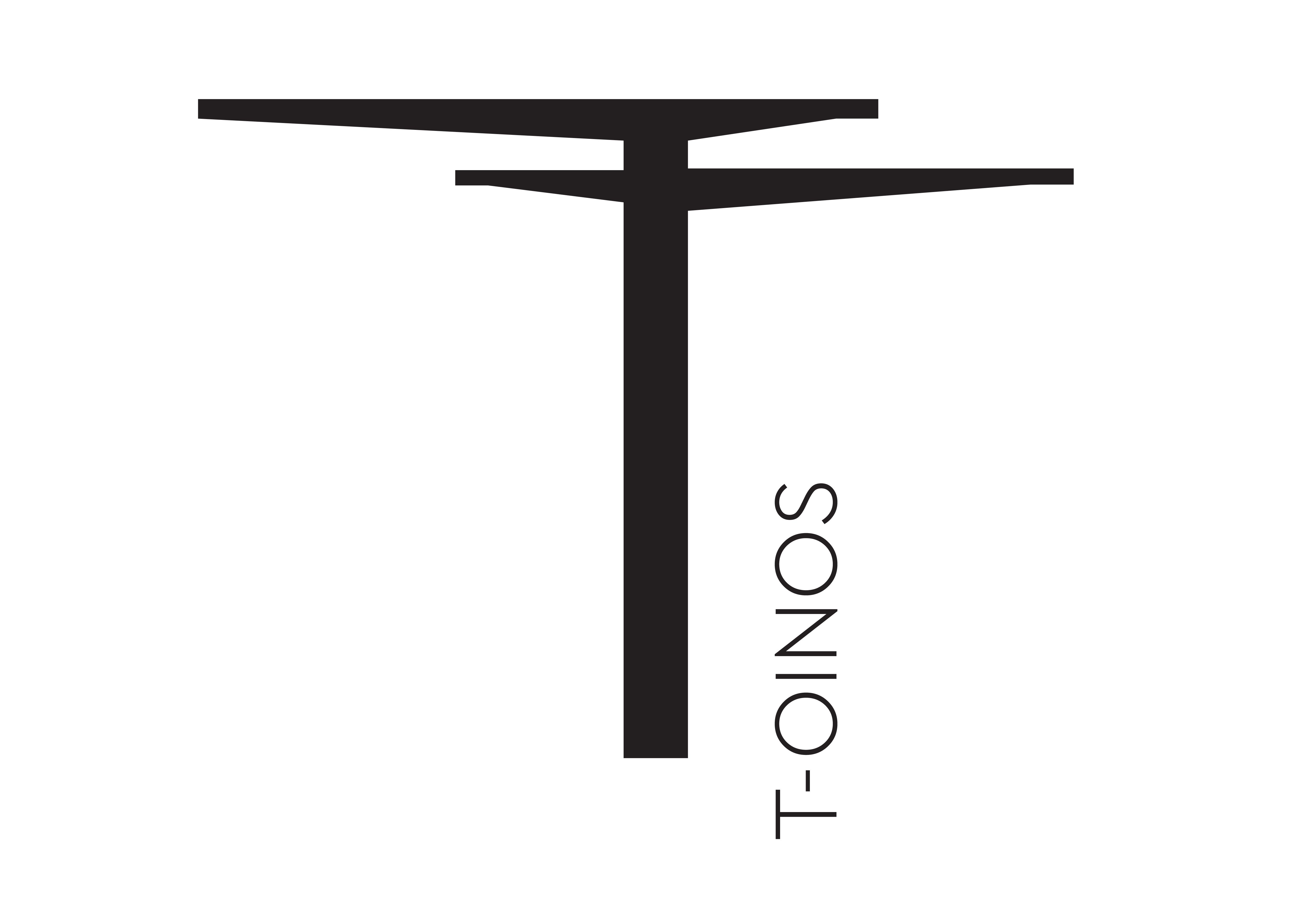Aromatic varieties are very well-suited to skin-fermentation – it brings finesse and freshness to the wine whereas the usual cool ferment of just the pressed juice can quickly tip over into more opulent and almost banal styles. This way the wines are finer and more structured with more tension.
The Heinrich family has farmed around the area of Gols on Lake Neusiedl in Austria’s Burgenland since at least 1730. Mixed agriculture, where grapes were as important as other crops, was the rule.
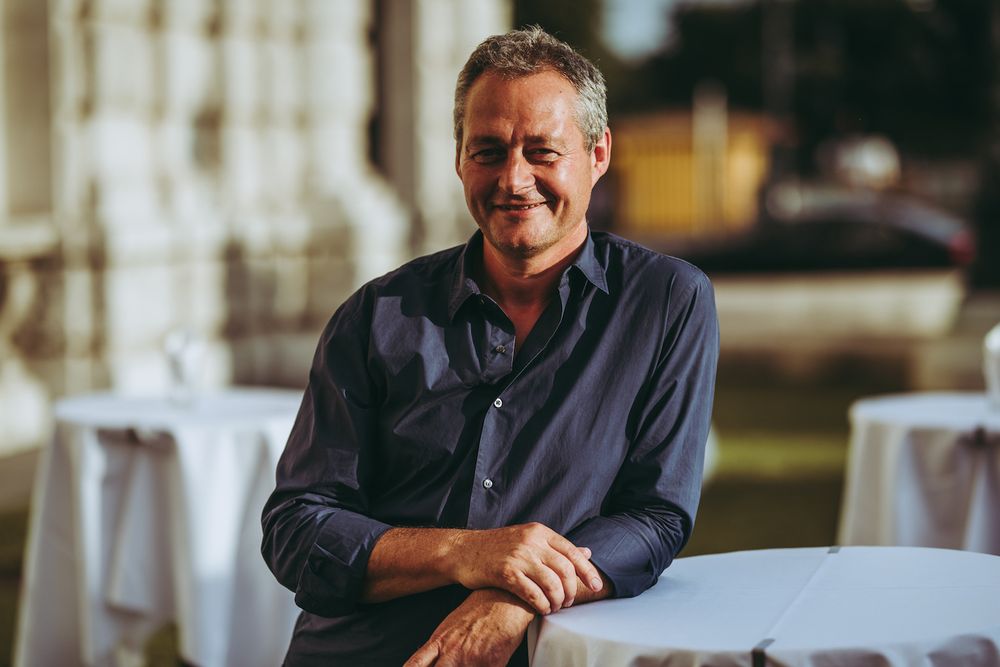
Gernot Heinrich, takings his loyal customers on a journey with his new wines
In the days of Gernot’s grandfather and father there were far more white than red grapes but since the mid 1980s Burgenland, in Austria’s warmer east, has become a hotspot for red wines: while red vines represent just 34% of all Austrian plantings, they rule in Burgenland and cover 57%[1] of all vineyards: Blaufränkisch, Zweigelt and Sankt Laurent reign supreme.
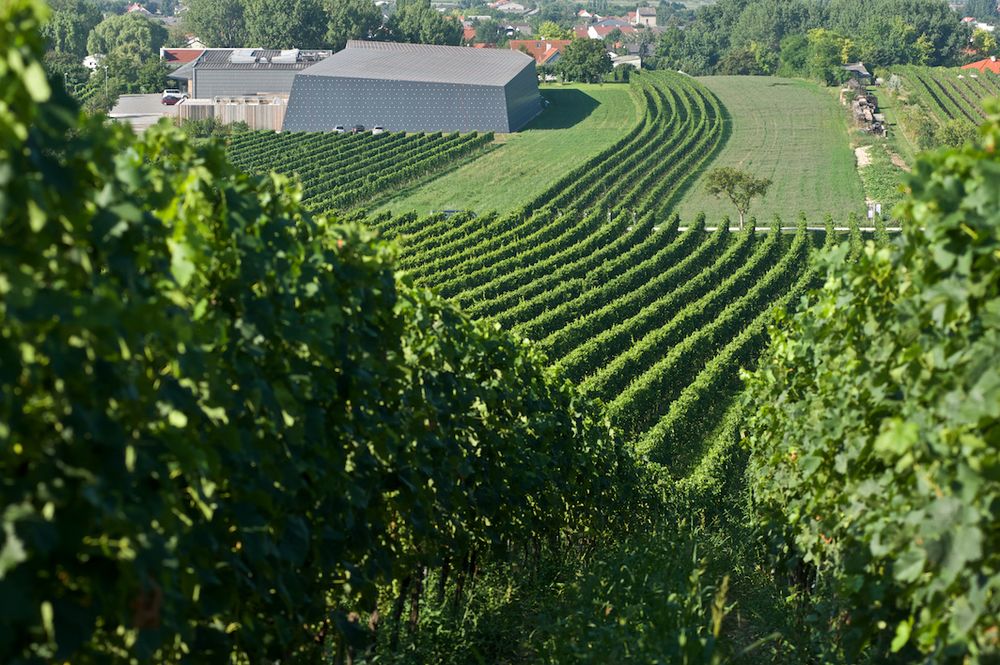
The Heinrich winery, Burgenland, Austria
When Gernot took over in 1985 he changed things around: he set his sights firmly on quality and ended up with 90% of his vineyards planted to reds. These are what made him famous: “Our initial success with these reds pushed us further into that direction. We wanted to produce great reds, which initially meant we were making more powerful and even opulent wines,” he says, following a general, international trend that looked for power and weight.
In a way this could have meant resting on his laurels but the transition to biodynamics in 2006 rang in the changes.
“Less yield, more balance, less alcohol, earlier physiological ripeness: all of this brought cooler elements into our wines,” Gernot remembers. “It also opened our eyes to the schist and limestone in the Leithaberg [a small mountain range]. I believe that this was the most significant change over the past years where our wines are concerned. This is where white wines really came in because some of our cooler, east-facing slopes are really perfect mesoclimates for white varieties.”

This, however, was a long way off from making skin-fermented whites.
“It all started with Traminer in 2011: we just wanted to preserve what’s inside the grape skins, it was so intense, and we wanted to extract that. It was exciting and we started with just one barrel. Aromatic varieties are very well-suited to this. The ferment on skins gives more finesse and freshness to the wine whereas the usual cool ferment of just the pressed juice can quickly tip over into more opulent and almost banal styles. This way the wines are finer and more structured with more tension.”
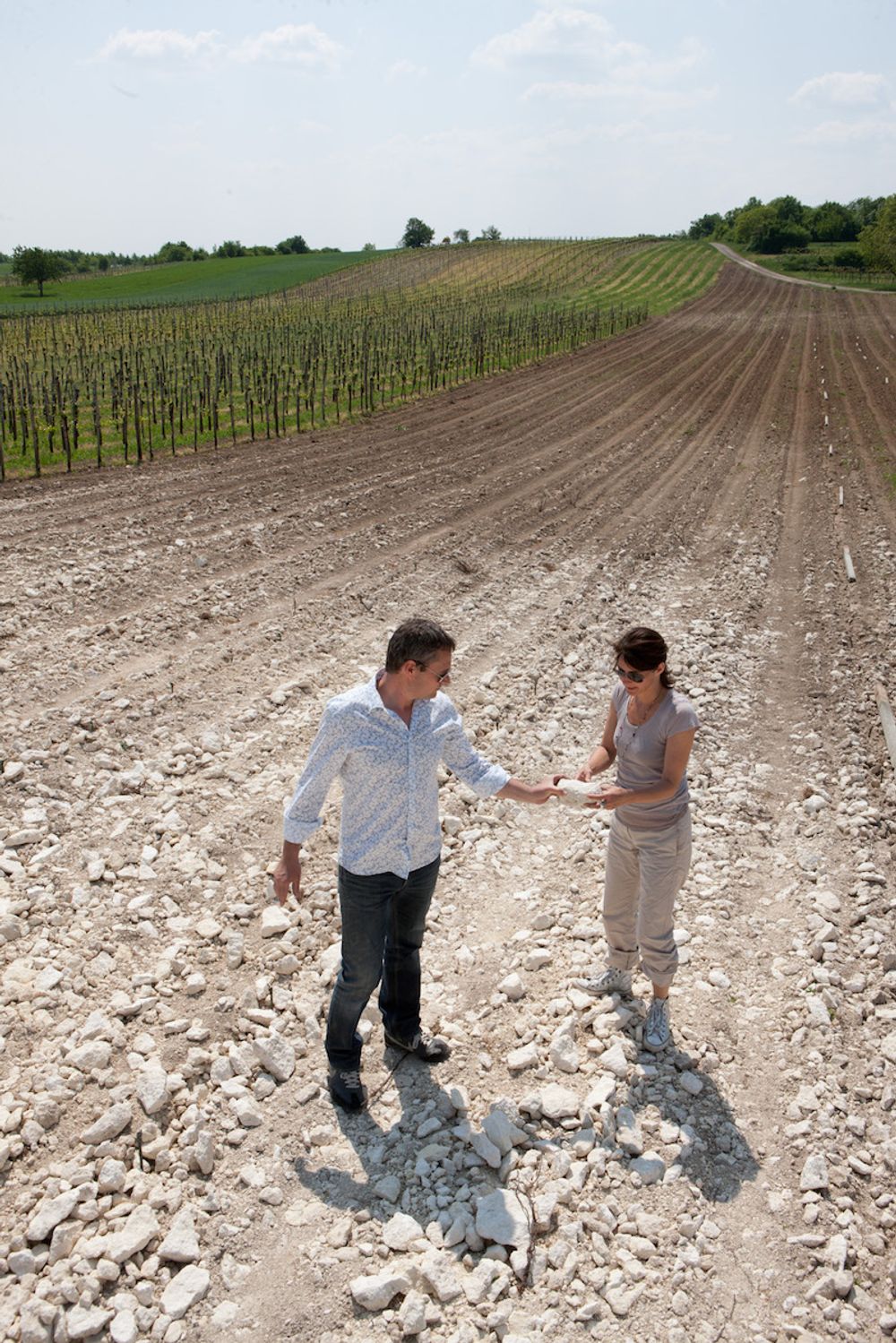
“Biodynamics opened our eyes to the schist and limestone in the Leithaberg. I believe that this was the most significant change over the past years where our wines are concerned.” Gernot Heinrich
The skin-fermented whites are light, fresh, peppery and squeaky clean. They have an inherent lightness that expresses the filigree phenolic structure even more. Alcohol levels are moderate. Cleanliness is important, Gernot emphasises: “I need perfectly ripe, perfectly healthy fruit in perfect condition. We sort scrupulously in the vineyard and in the cellar and we work with gravity only so that the healthy berry drops into the fermentation vessel in a perfect state.”
He mentions an oscillating de-stemmer which keeps the berries integral as they are taken off the bunch: “This way we do not destroy this structure and ferment begins inside the berry. This way we get more elegance and avoid bitter phenolics. We are also very careful after the fermentation and only press gently with a basket press. All of our methods are very simple but that is expressed in the wine.”
A striking feature of his skin-fermented whites is that they come in stoneware bottles. Is this just a gimmick? “No, we find that this is a logical transition from clay amphorae to a stoneware bottle. The wine is really protected from light and temperature and develops differently.”
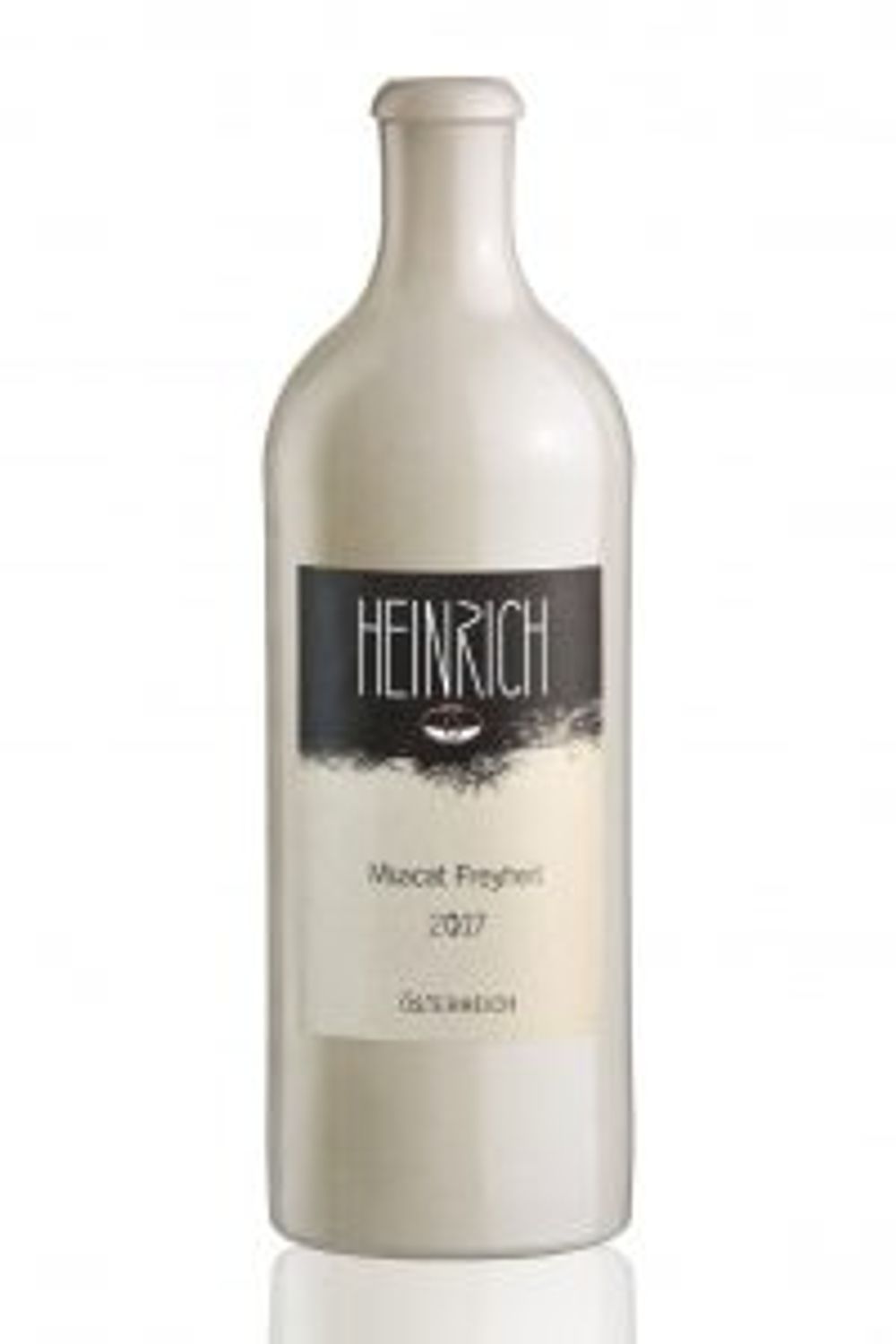
What about his client base, can they understand this stylistic transition? How do these buyers of elegant, age-worthy reds react when they are confronted with skin-fermented whites in stoneware bottles?
“Partially our existing clients join us on this fascinating journey – but we have also lost some customers. We know this is a niche, far away from the mainstream so this also takes different marketing channels.”
In middle age, Gernot is probably too old to be a trend-chasing hipster, and the stylistic evolution is motivated by conviction, even if it is hard: “We just loved the limestone sites and we wanted to express this in the wines. This method of vinification was the most direct way of doing that. Sensorially we immediately clicked with the wines. We are enthused and we feel more authenticity and more liveliness.”
“Of course I have taken a step back and feel I am once more at the beginning, like 25 years ago when we had to explain about our red wines. But this is also what makes this job so interesting. I want to do something that I can stand for, something that I personally like very much and I want to pass on this message. Resting with the status quo is not a challenge.”
It is not only with whites that the Heinrichs have changed direction: “In our red vinification we have also transitioned to a more natural vinification, working according to our motto of ‘adding nothing, subtracting nothing’. This refers to the natural composition of the grape but also to sulphur management,” Gernot says.
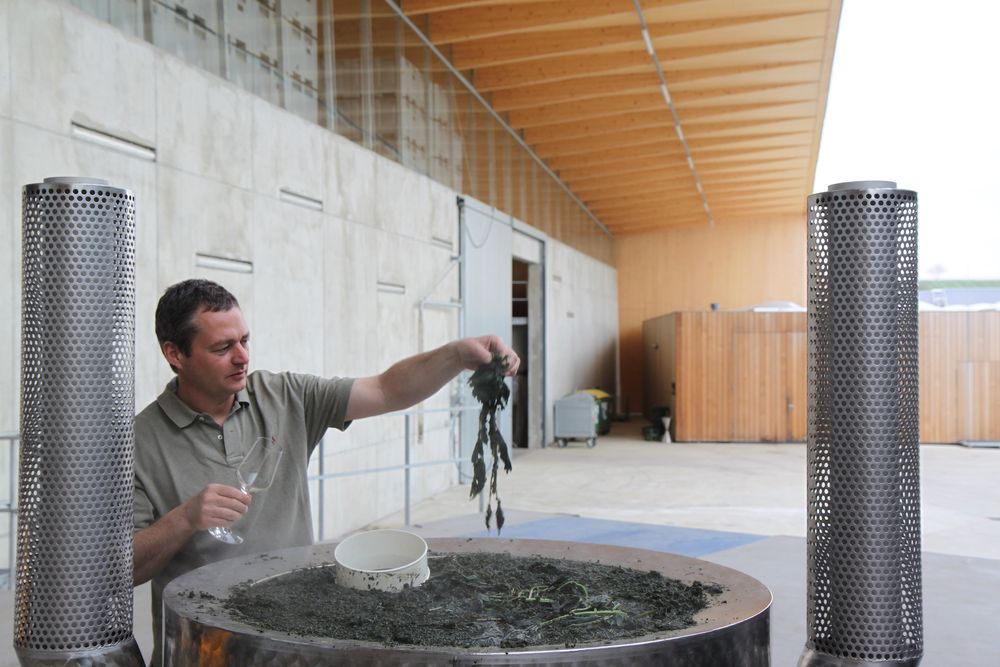
Most of his finished reds have no more than 40ppm of SO2. “Skin- and lees contact grant durability and ageing potential and we realise that even gentle extraction already provides sufficient phenolics and a natural kind of reduction. These factors strengthen the inner resilience of our wines. This way they are a little more demanding in youth and the element of time gains more and more importance.”
Right now, Gernot & Heike Heinrich’s plantings are still tilted in favour of reds but white are gaining more importance. About a third of whites is fermented on skins but Gernot hopes to take that to 50%. It’s one thing for a youngster without a track record to go all hipster, quite another for an established winemaker to change track. Tasting the wine you know why.
Muscat Freyheit 2017, 11.5% ABV: made from 70% of Muscat Ottonel grown on mica schist, 25% Pinot Blanc grown on limestone, 5% Chardonnay. Fermented on skins in 1000-liter amphorae in a cellar 8m below ground. Basket-pressed and matured in used oak barrels. No addition of SO2. The nose is gorgeously floral with lovely hues of ripe apple and yeast. The palate is light, very textured and super-dry. Gernot says he loves the “playful phenolics”.
Gernot & Heike Heinrich wines are available from Liberty Wines – the skin-fermented range is not yet available here.
[1] Dokumentation Österreich Wein – Weingartenflächen und Flächenanteile der Rebsorten 2018
